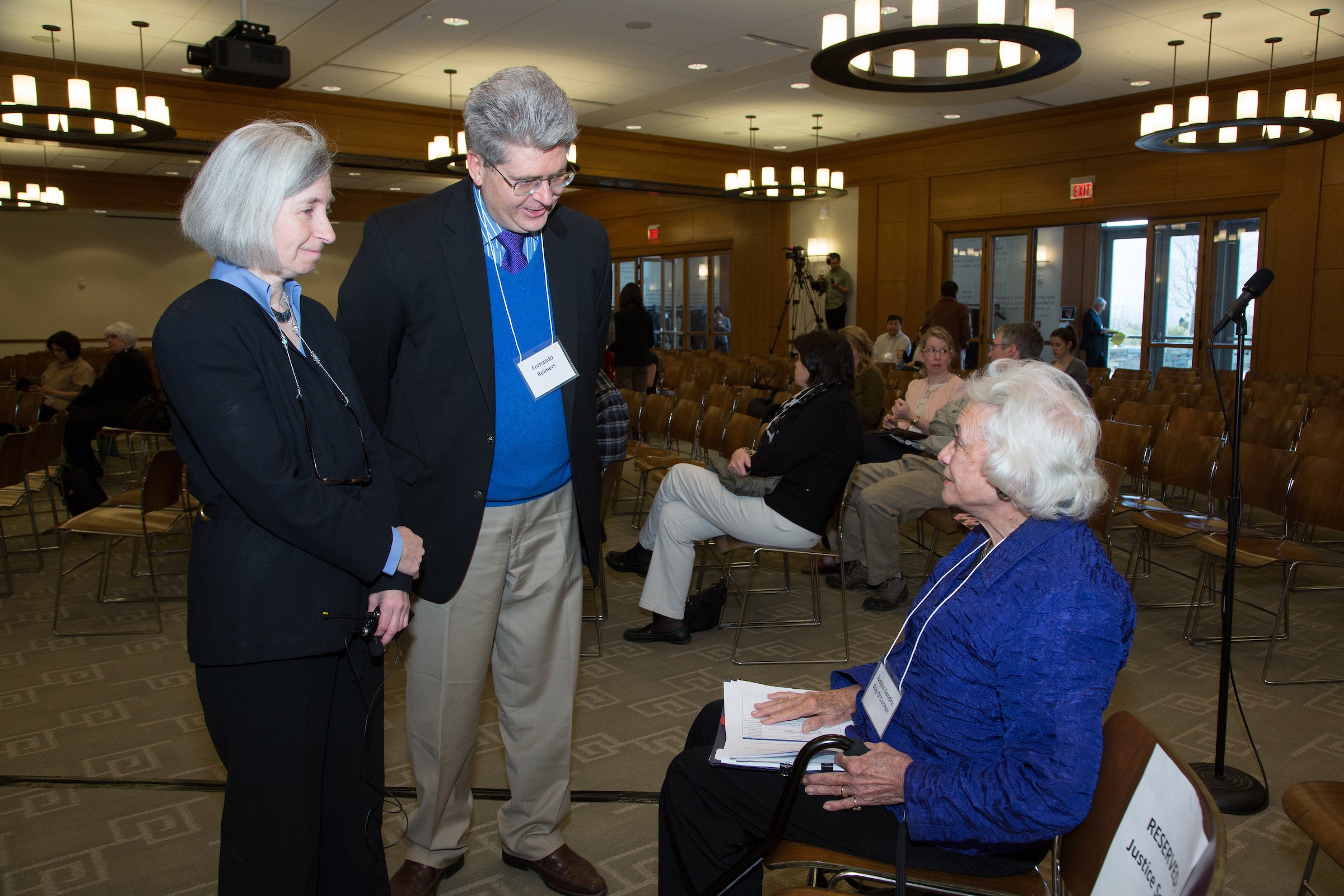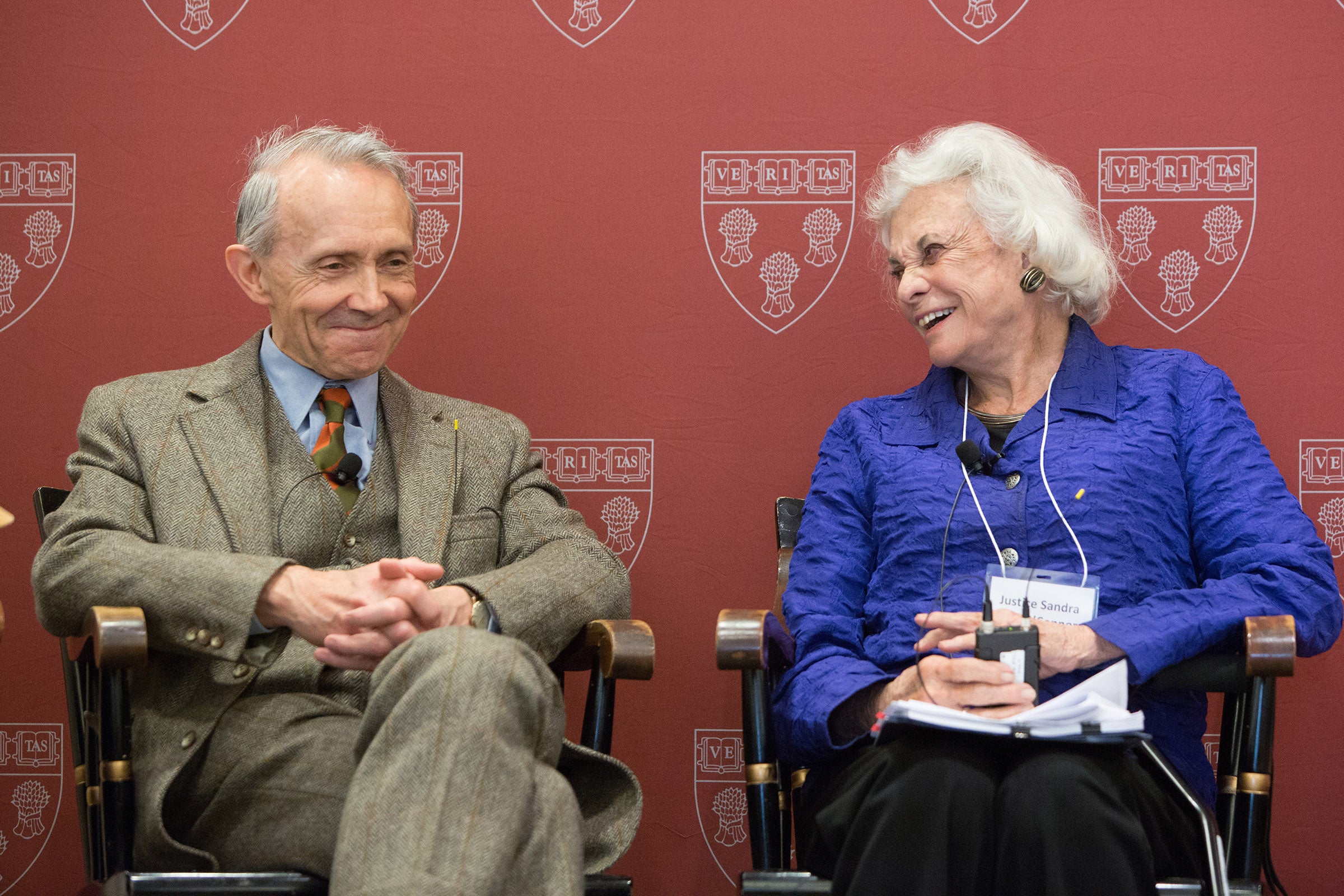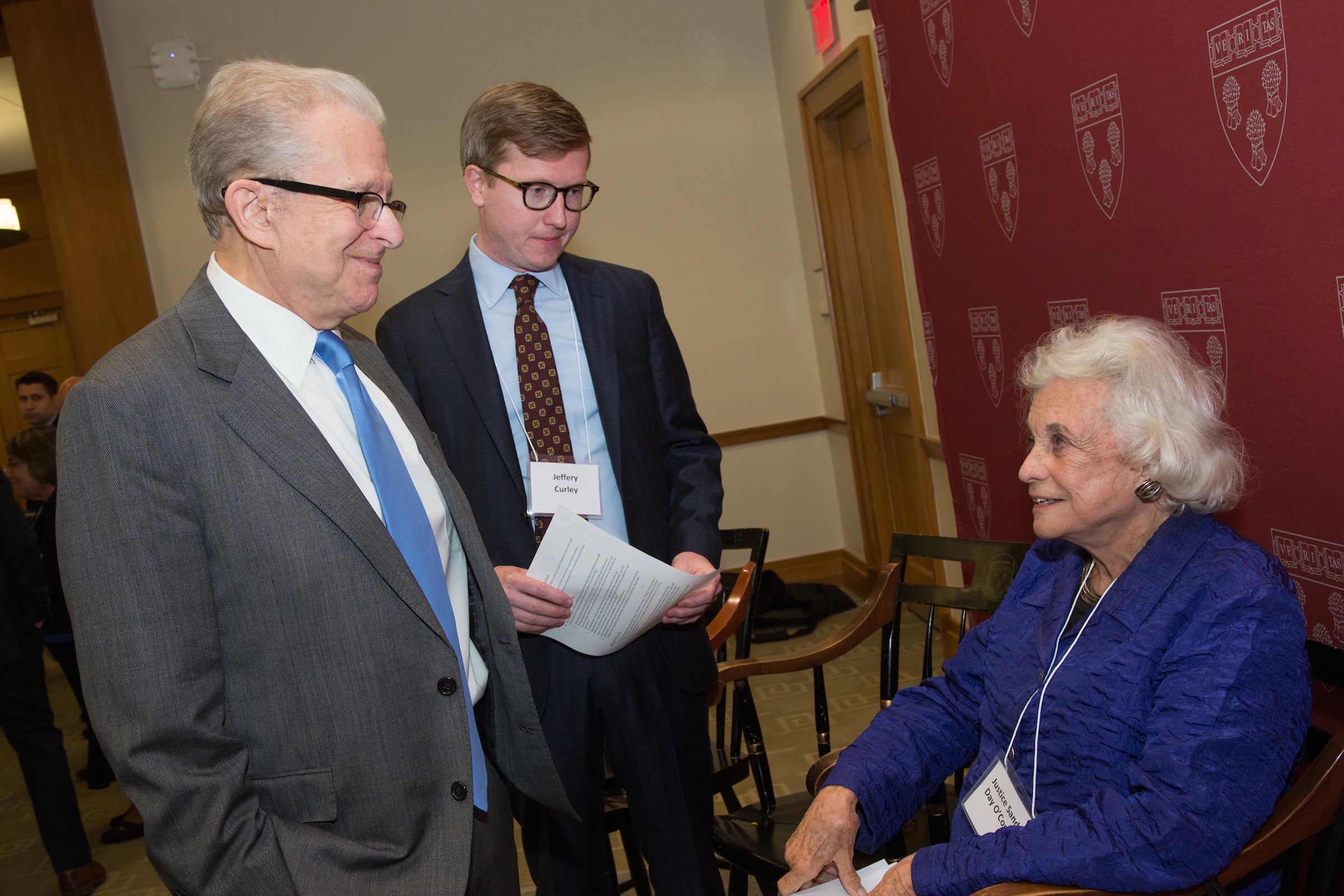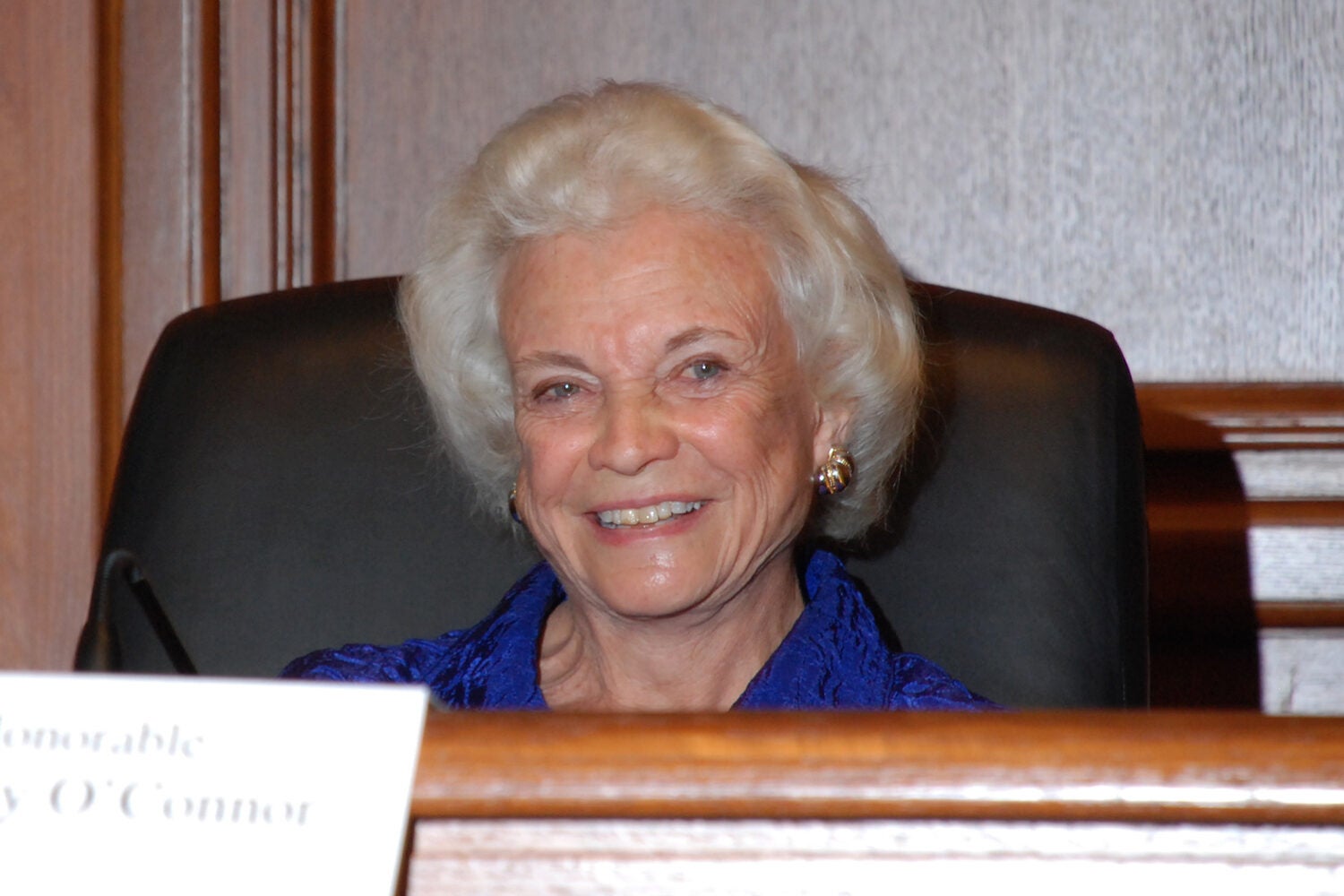United States Supreme Court Associate Justice Sandra Day O’Connor, the first woman to serve on the Supreme Court, died Dec. 1. She was 93. Nominated by President Ronald Reagan, O’Connor made history when she was unanimously confirmed by the Senate on Sept. 21, 1981 .
Harvard Law School Dean John F. Manning ’85 said: “Justice O’Connor was a wise and judicious jurist who always sought to build consensus and paid close attention to the law’s deep context. Few Justices have shaped the law more in their time on the Court.”
Known for her independence on the bench, during her 25-year tenure on the Court, O’Connor was a vocal advocate for equal protection under the law.
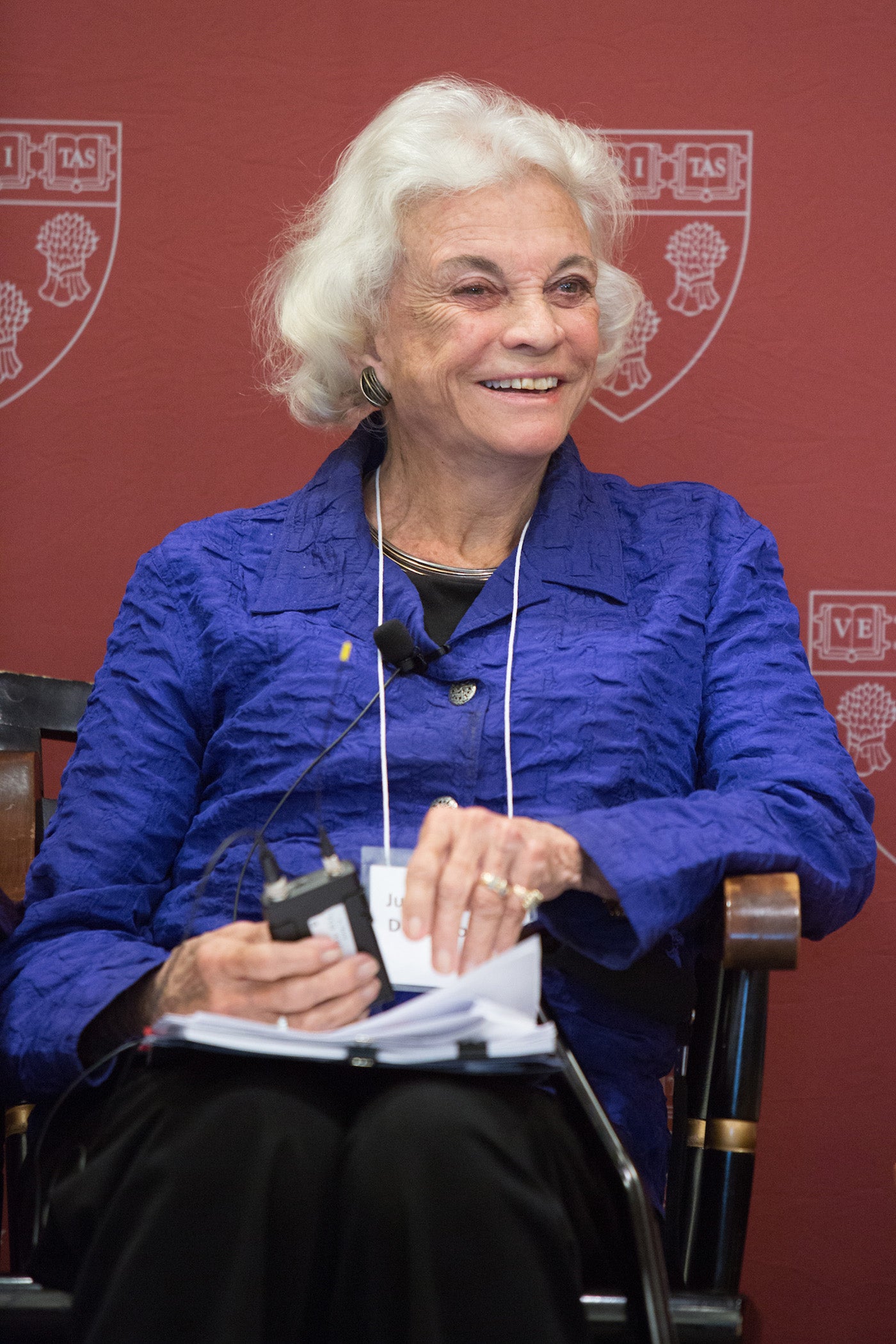
Harvard Law Professor Richard Lazarus ’79, who has represented the United States, state and local governments, and environmental groups before the Supreme Court in 40 cases, said his fondest memory of Justice O’Connor was the central role she played at oral argument. “Justice O’Connor always asked the first question. And it was always the hardest question for the legal position for which I or any other attorney was advocating.”
“Justice O’Connor was also an outstanding lawyer, whose questions reflected the rigor of her underlying legal analysis. But what made her voice distinctively refreshing was her attention to the practical effect of a Court ruling on individual people,” said Lazarus. “For the Justice, resolution of hard legal issues was not merely the product of intellectual debate, but also required careful attention to what what the Court’s ruling would mean for people in their daily lives. More than anything else, a basic desire to ensure justice and fairness often explained her votes in cases.”
In 2008 she was honored at Harvard Law School, along with Archbishop Desmond Tutu of South Africa and Dolores Huerta, American labor leader and civil rights activist, as a recipient of the Charles Hamilton Houston Justice Award during a two-day conference on social justice.

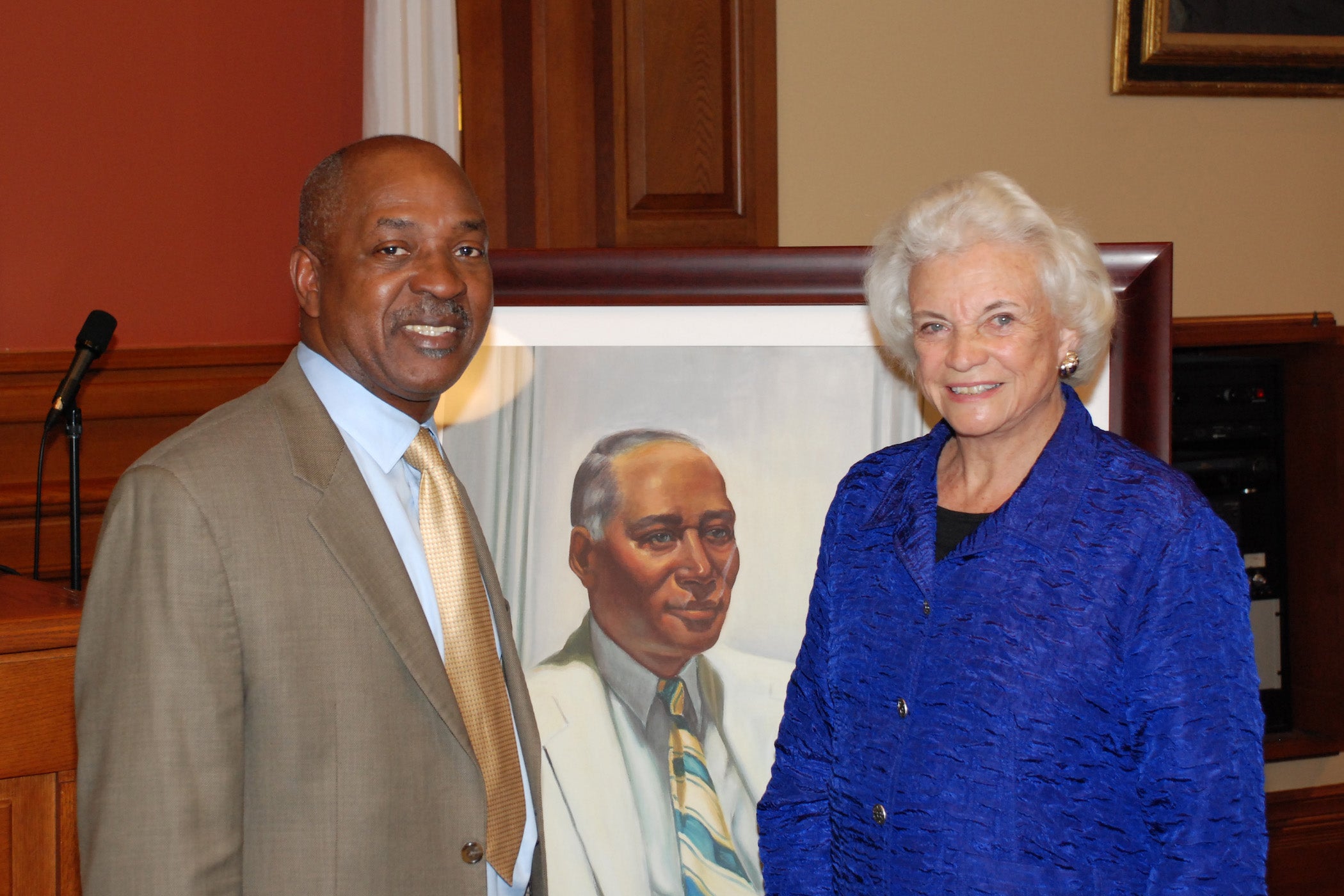
During her visit, O’Connor delivered an address assessing the nation’s progress toward inclusion five years after the Grutter v. Bollinger decision, the 2003 University of Michigan affirmative action case upholding race-conscious admissions decisions at public universities. O’Connor, who wrote the majority opinion in the case, defended the Court’s 5-4 ruling.
“In the ideal world, I think skin color would be treated like eye color or like one’s religion, whose differences we tolerate and celebrate and do not rank,” she said in her address. “But in today’s America, I’m inclined to think that race still matters in painful ways.”
In homage to Justice O’Connor’s majority opinion in Grutter, the Charles Hamilton Houston Institute in 2005 launched its O’Connor Project, which brought together experts in a variety of fields — economics, housing, public health, criminal justice, and more — to try to close the opportunity gap faced by children of color.
“It could be plausibly argued that no one who was not a chief justice influenced the Supreme Court more than O’Connor did, with the possible exceptions of Justices Joseph Story and William Brennan,” Harvard Law Professor Noah Feldman wrote in a 2018 tribute to Justice O’Connor, after O’Connor stepped back from public life. “For nearly a quarter century, she was the definitive swing vote on a court that decided almost all major issues by a 5-4 vote. Much of her career overlapped with what was technically the Rehnquist court, because he was chief justice. But in historical terms, it was really the O’Connor court.” Feldman said that O’Connor’s historic influence was “compromising, moderate centrism.”
Born in El Paso, Texas in on March 26, 1930, O’Connor grew up on a cattle ranch that ranged more than 300 square miles from southeastern Arizona to southwestern New Mexico.
She co-authored a book about her childhood in the American Southwest with her brother, H. Alan Day, titled “Lazy B: Growing Up on a Cattle Ranch in the American Southwest.” In 2002, she and her brother discussed the book as part of Harvard Law School’s Saturday School, a forum founded by Professor Charles Ogletree for students to engage in constructive dialogue with professors, legal practitioners, elected officials, judges, and others.
O’Connor earned a B.A. in economics from Stanford and a J.D. from Stanford Law School in 1952. Like many female law graduates during that time, she described being offered only secretarial jobs at law firms upon graduating, despite her stellar academic record, graduating third in her class at Stanford Law.
Following graduation, she secured a job as a law clerk with the San Marco County District Attorney’s Office. After she was promoted to deputy district attorney, she worked on civil cases, advising county officials on government codes.
She later became involved in Republican politics in Arizona. She was appointed to replace an Arizona state senator in 1969, and won reelection for two terms. In 1972, she was elected senate majority leader, becoming the first woman to hold the position in any state.
In 1974, O’Connor was appointed to the Maricopa County Superior Court, serving until 1979 when she was elevated to the Arizona State Court of Appeals, where she served until 1981 when she was appointed to the Supreme Court
Justice O’Connor visited Harvard Law School several times over the years.
In 1982, she presided over the Ames Moot Court competition with Ruth Bader Ginsburg ’56-’58, then a judge for the U.S. Court of Appeals for the District of Columbia Circuit. Ginsburg would join O’Connor on the Supreme Court in 1993.

After stepping down from the bench in 2006, O’Connor devoted much of her time to advocating for early civics education. In 2009, she founded the nonprofit iCivics, an online learning platform that includes free teaching materials devoted to the topic.
In 2013, she joined Ret. Supreme Court Justice David Souter, former Solicitor General Kenneth Starr, Harvard Law Professor Laurence Tribe ’66 and then Harvard Law School Dean Martha Minow for a daylong symposium at Harvard Law School, “Civics Education: Why it matters to Democracy, Society and You,” on the importance of civics education.
At the symposium, O’Connor said one way to combat a growing cynicism about government, especially in younger generations, is to engage young people in some kind of civic action or experience.
“All you have to do is get the students involved in some question of a local nature that raises a constitutional issue. Let them ask the question and get involved, maybe bring some petition or motion before a public body to get them engaged in it. It gets them turned on right away,” she said.
Minow, now the 300th Anniversary University Professor at Harvard, said: “Justice O’Connor should be remembered not only as the first woman on the U.S. Supreme Court, but as a truly consequential jurist, thoroughly devoted to reasoning, listening, and ensuring that resolutions of even the most difficult matters respected and took into account conflicting views. Her attention to context and realities reflected real wisdom. And her post-Court work, creating iCivics — one of the most innovative and meaningful initiatives to advance civic knowledge and engagement by young people — will endure as an invaluable avenue for involving new generations in the hard and crucial work of reasoning, listening, and solving problems through self-government.”
